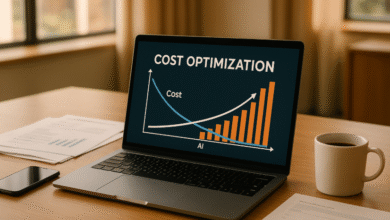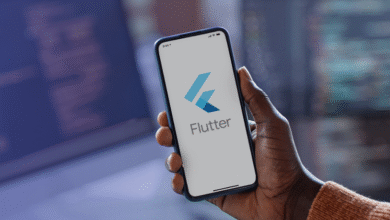Is 3D Printing Cheaper Than Buying?

The allure of a 3D printer sitting on your desk, ready to materialize anything you can imagine, is powerful. Many assume that owning one automatically translates to significant savings. However, the reality of 3D printer filament costs, equipment amortization, and the often-overlooked value of your own time can quickly complicate this picture. This analysis delves into a practical cost-benefit comparison, examining when do-it-yourself (DIY) 3D printing truly offers an economic advantage over purchasing retail products across various categories.
Understanding the Cost Calculation Framework
Before we dive into specific examples, it’s crucial to establish a framework for evaluating the true cost of a 3D-printed item. This isn’t just about the price of the plastic; it’s about a holistic view of the investment.
Key Variables:
- Printer Amortization: A $300 entry-level 3D printer, if used for approximately 2,000 print hours over its lifespan, adds about $0.15 per hour to the cost of each print. This accounts for the initial investment in the machine itself.
- Filament Costs: A standard kilogram spool of PLA filament typically costs around $20. This translates to roughly 330 meters of 1.75mm filament. Knowing the weight of filament a print consumes allows for a precise material cost.
- Labor Valuation (Optional but Recommended): While often ignored for hobby projects, valuing your personal time at, say, $15 per hour, provides a more realistic understanding of the true “cost” when comparing it to a store-bought item.
Break-Even Formula:
A simple formula helps determine how many times you need to print an item for it to become more economical than buying:
(PrinterCost+FilamentUsed)/ComparableRetailPrice=RequiredPrints
See also: Tips Betterthisfacts : Helpful Daily Tips and Knowledge
Category Comparisons: Print vs. Buy
Let’s apply this framework to common product categories and see where 3D printing shines and where it struggles.
Home & Office Essentials:
These are often cited as prime candidates for 3D printing due to their relatively simple designs and common utility.
Bookstand:
- Print Cost: Approximately 3 hours of print time (at $0.15/hour printer amortization) plus 80 grams of PLA filament ($1.60). Total print cost: ~$2.05.
- Retail Price: A similar plastic bookstand might cost $8-$15.
- Break-Even: You’d need to print between 5 to 9 bookstands to justify the printer’s cost for this specific item. If you only need one, buying is clearly cheaper.
Drawer Dividers:
- Print Cost: Around 45 minutes of print time plus 30 grams of PETG filament ($0.75). Total print cost: ~$0.86.
- Retail Price: A set of acrylic drawer dividers might retail for $4-$8.
- Break-Even: You’d need to print 12-18 individual dividers for printing to make sense economically.
Toys & Games:
This category is a mixed bag, offering both clear wins and definitive losses for 3D printing.
Chess Set:
- Print Cost: A full chess set can take around 28 hours to print and consume 400 grams of PLA ($8). Total print cost: ~$12.20.
- Retail Price: A mass-produced plastic chess set can be found for as little as $25.
- Break-Even: Economically, you’ll likely never break even on a standard chess set due to the extensive print time. This is a case where the enjoyment of making outweighs the financial savings.
Miniatures (for tabletop gaming):
- Print Cost: A detailed miniature can take 2 hours to print and use about 15 grams of resin ($0.45, assuming a resin printer). Total print cost: ~$0.75.
- Retail Price: A pre-painted miniature can easily cost $8-$12.
- Break-Even: Here, 3D printing is a clear winner. You’d break even after printing 20-30 miniatures, making it highly cost-effective for avid hobbyists.
Cost Comparison: 3D Printed vs. Manufactured Goods
| Item | Print Cost | Retail Price | Savings at 10 Uses |
| Phone Case | $1.20 | $15 | $138 |
| Garden Tool | $3.50 | $22 | $185 |
| Cabinet Knob | $0.40 | $5 | $46 |
The Hidden Cost Factors
Beyond the direct expenses, several less obvious factors contribute to the true cost of 3D printing:
- Time Investments: Even simple prints require an average of 30 minutes for setup, including slicing the model, loading filament, and preparing the print bed. This time adds up quickly.
- Print Failures: A common frustration for 3D printer users is the 2-5% failure rate, which often requires reprinting, wasting both time and filament.
- Equipment Maintenance: Like any machine, 3D printers require upkeep. Annual costs might include replacing nozzles ($15) or refreshing build surfaces ($25). While firmware updates are typically free, the time spent performing them is still an investment.
When 3D Printing Truly Wins
Despite the hidden costs and break-even challenges, there are specific scenarios where 3D printing offers undeniable value:
Customization Premium: This is arguably the biggest strength of 3D printing. Consider orthodontic night guards. A retail-bought, custom-fitted night guard can cost upwards of $400. With a specialized dental-grade resin printer, the material cost for a custom-fit guard can be as low as $8. The ability to tailor a product precisely to individual needs provides immense value that mass production cannot easily replicate.
Discontinued or Obscure Parts: Have you ever tried to find a replacement knob for a vintage appliance or a specific plastic bracket for an old car? These components are often unavailable commercially. 3D printing makes it economically viable to produce these unique, low-volume replacement parts, regardless of quantity. The “any quantity” viability here is key, as traditional manufacturing requires high volumes to be cost-effective.
When Buying Prevails
Conversely, there are situations where traditional manufacturing methods overwhelmingly win on cost and practicality:
Structural Components: Items requiring significant strength, like chair legs or bicycle frames, often demand industrial-grade 3D printers and specialized, expensive materials (e.g., metal alloys). These machines and materials are well beyond the budget of the average hobbyist. For load-bearing applications, traditional manufacturing generally offers superior strength, reliability, and cost-effectiveness.
High-Volume Needs: If you need 100 or more identical items, conventional manufacturing techniques like injection molding will almost always be more cost-effective per unit. The setup costs for injection molding are high, but the per-unit cost plummets with scale, making it ideal for mass production.
Conclusion
While the dream of endless, free creations from a 3D printer might be a bit ambitious, its true value lies in its niche strengths. For customized, low-volume items, unique replacement parts, or products with a high retail markup, 3D printing, utilizing the right 3D printer filament, can indeed be significantly cheaper than buying. However, for mass-produced goods, especially those requiring high structural integrity or needed in large quantities, traditional manufacturing still maintains a clear cost advantage. Savvy makers understand these distinctions, focusing their printing efforts on designs that maximize savings and capitalize on the unique capabilities that only additive manufacturing can provide.




